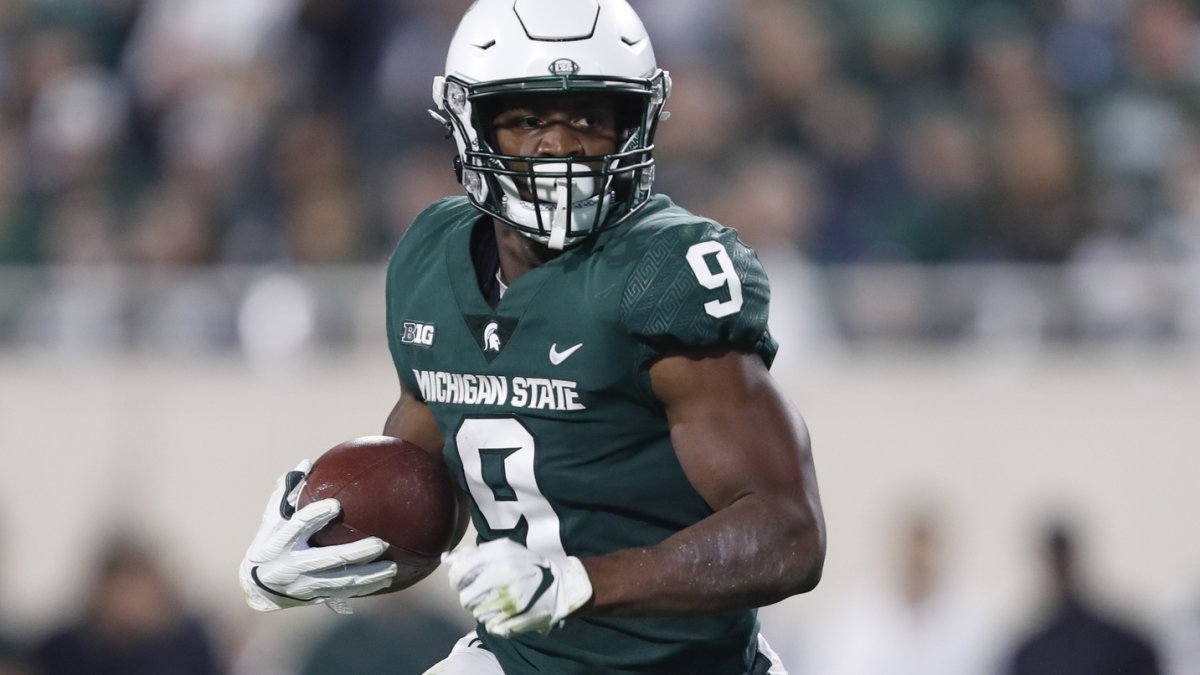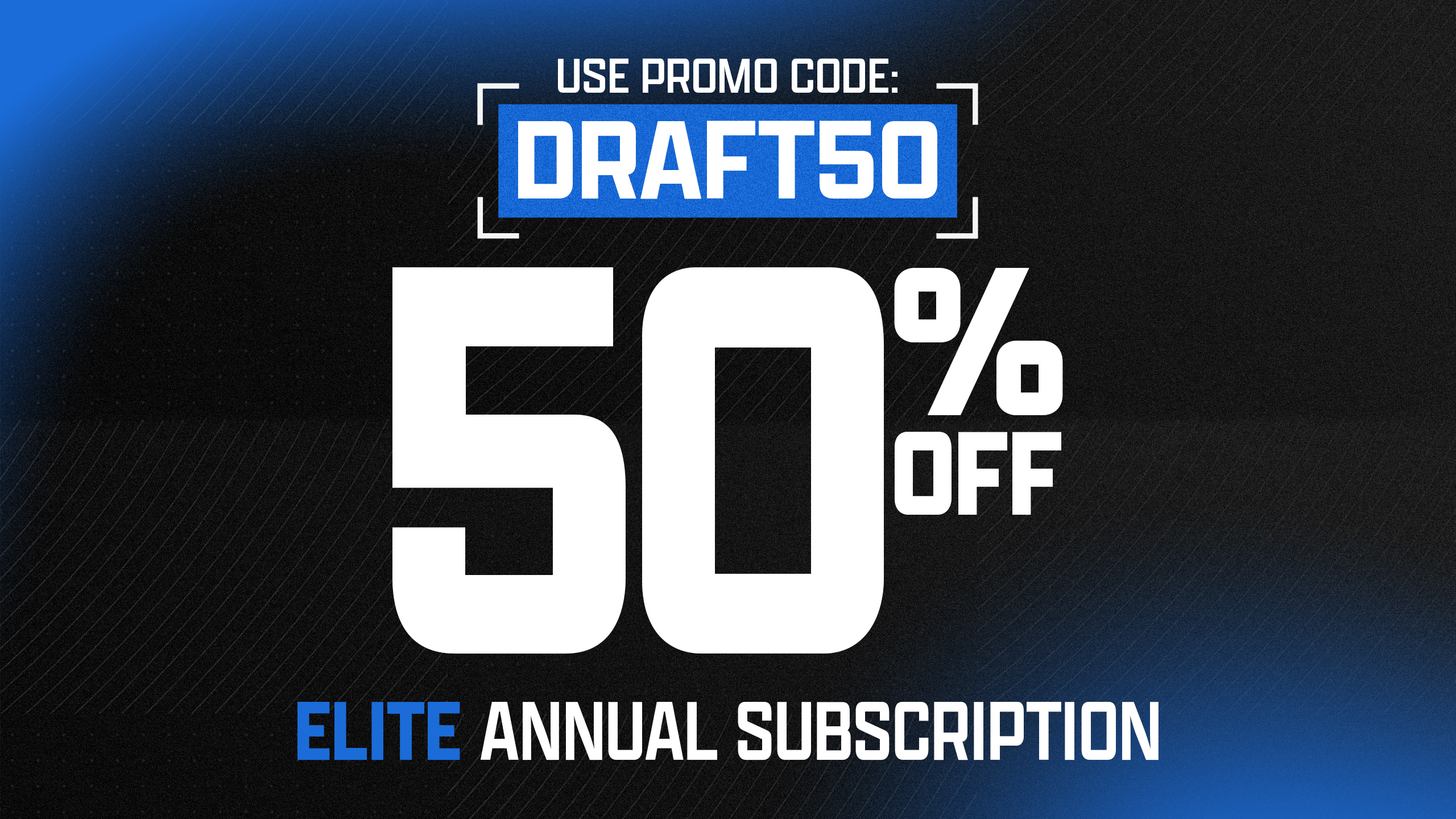Earlier this offseason, I took an initial shot at projecting the 2022 NFL Draft wide receiver and running back classes into the NFL after they completed their combine workout. In this piece, I’m updating the pre-draft projections now that we have the actual NFL draft positions.
In this 2022 NFL Draft prospect analysis at the running back position, I’m going to detail the quantitative process behind the results, including the importance of different features and how draft position, age, athletic traits and production markers all blend into a single prediction.
In this case, the prediction will be focused on fantasy football results, specifically the percentile for projected top-12 fantasy weeks at the position over the prospect's first two NFL seasons. We could extend the window further to cover a player’s entire career, but the point in the real NFL draft and fantasy rookie drafts is to see a return on investment earlier rather than later.
This analysis will cover all running backs from the 2022 class who were selected in the NFL draft.
METHODOLOGY
This analysis uses what is known as an ensemble model, or a blend of the results from different models that are then blended together to form a single, and hopefully more precise, final prediction. One of the models is tree-based while the other is linear. The historical data from previous running back classes from 2006 through 2019 were used to train the models, including the number of actual top-12 weekly fantasy finishes for those previously drafted running backs. The historical fantasy finishes are based on points-per-reception (PPR) scoring.
The features for each running back in the models are as follows, ordered by relative importance and statistical significance. The stats are from the prospects’ best statistical season in which they played at least five games and logged at least 25 carries:
- Draft position
- Total team yards market share
- Rushing yards per game
- 40-yard dash
- Total team touchdown market share
- Receptions per game
- Draft age
- Weight
- 10-yard split
Draft position is the most important feature in predicting fantasy success for running backs, followed by production and athletic measurements.
I also included my estimation for the amount of opportunity each running back's landing spot affords them for rookie production in the tables. While the opportunity score (“Opp Score”) is not part of the percentile model projection, it is an important piece of context to keep in mind when thinking about the likelihood of success for running in the same tier in terms of projection. You can find the details of the methodology I used to calculate the opportunity scores for rookie running backs, here.
2022 RUNNING BACK CLASS

There is only one running back in the 2022 class' top tier, and it isn’t really close. Breece Hall combines elite production, age and athleticism, plus will join a backfield with the New York Jets that has plenty of opportunities for a rookie to immediately be productive.
Hall was an excellent college receiver, which is hugely important when projecting fantasy success for running backs in PPR formats. Despite not having first-round draft capital behind him, Hall scores above the 90th percentile for prospect projections, and should be the first pick in dynasty rookie drafts.

Kenneth Walker and James Cook have significant differences as prospects, but both occupy the second tier in the class.
Walker has the stronger profile generally and was selected 20-plus picks earlier, but he has a fatal flaw for projecting high-end success in PPR formats. Walker never averaged more than 1.1 receptions per game in any college season, which makes his projection murkier as an elite NFL producer.
He could prove the numbers wrong, but a lack of college receiving production is not something you’d want to bet on. Outside of Derrick Henry, none of the 10 second-round running backs over the last 15 years who accumulated fewer than 1.1 receptions per game has posted a top-seven season in PPR formats.
Cook has a nearly opposite profile. He was a good receiver in college but never averaged more than 50 rushing yards per game and didn’t account for many touchdowns, either. Cooks' upside comes in the form of opportunity while playing with one of the league’s most explosive offenses that lacked a clear lead back going into the draft.

DOMINATE FANTASY FOOTBALL & BETTING WITH AI-POWERED DATA & TOOLS TRUSTED BY ALL 32
 Unlimited Fantasy League Sync
Unlimited Fantasy League Sync
 Fantasy Start/Sit Line-Up Optimizer & Waiver Wire
Fantasy Start/Sit Line-Up Optimizer & Waiver Wire
 WR-CB & OL-DL Matchups, PFF Player Grades, & Premium Stats 2.0 Tools
WR-CB & OL-DL Matchups, PFF Player Grades, & Premium Stats 2.0 Tools
 Nathan Jahnkes Rankings - #1 Most Accurate Last 70 Weeks
Nathan Jahnkes Rankings - #1 Most Accurate Last 70 Weeks
 PFF Best Bets, Player Props, & Power Ranking Tools
PFF Best Bets, Player Props, & Power Ranking Tools
 NFL Mock Draft Sim with Trades & Draft Grades
NFL Mock Draft Sim with Trades & Draft Grades
Already have a subscription? Log In





 © 2024 PFF - all rights reserved.
© 2024 PFF - all rights reserved.